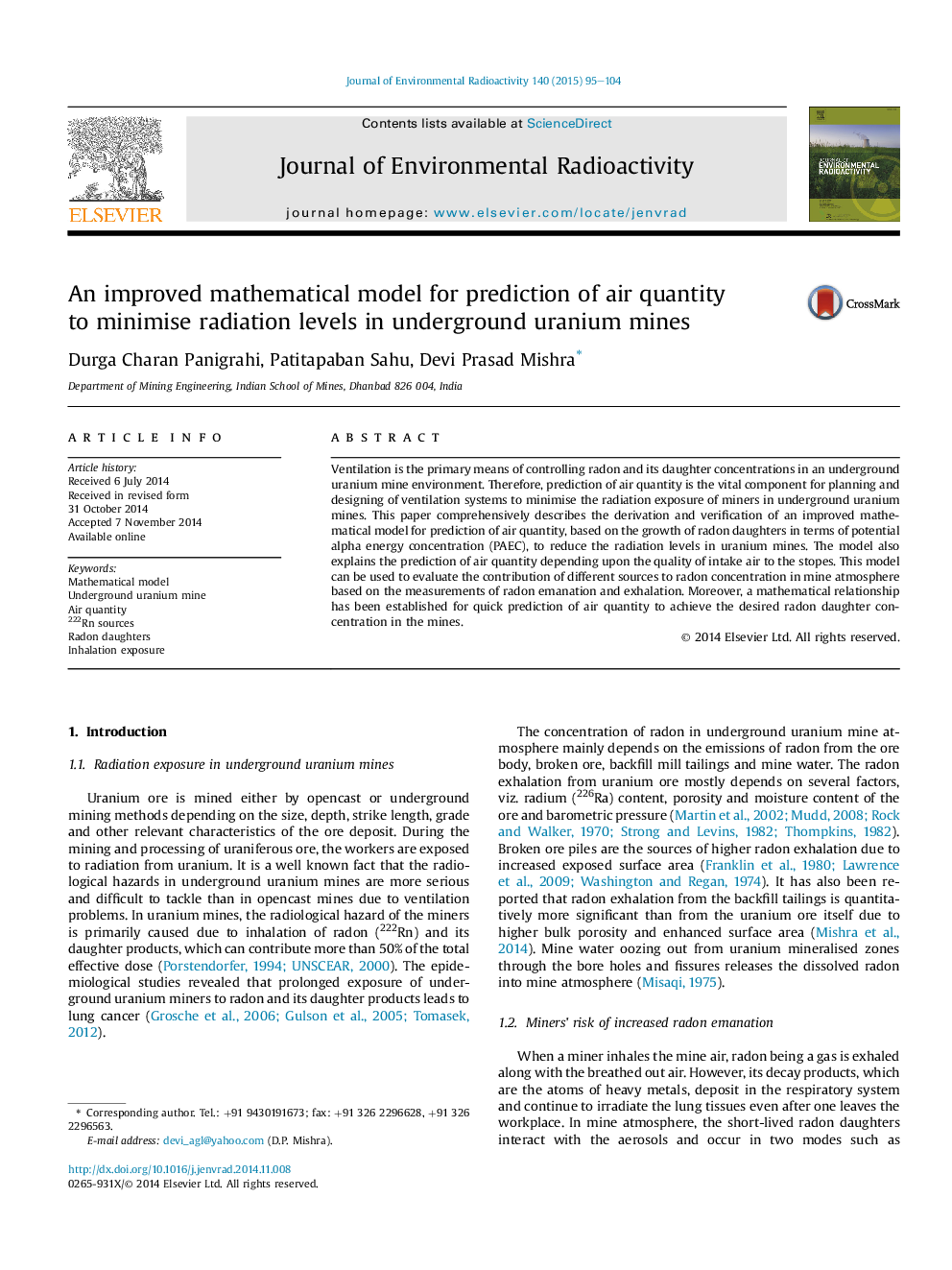| Article ID | Journal | Published Year | Pages | File Type |
|---|---|---|---|---|
| 8082511 | Journal of Environmental Radioactivity | 2015 | 10 Pages |
Abstract
Ventilation is the primary means of controlling radon and its daughter concentrations in an underground uranium mine environment. Therefore, prediction of air quantity is the vital component for planning and designing of ventilation systems to minimise the radiation exposure of miners in underground uranium mines. This paper comprehensively describes the derivation and verification of an improved mathematical model for prediction of air quantity, based on the growth of radon daughters in terms of potential alpha energy concentration (PAEC), to reduce the radiation levels in uranium mines. The model also explains the prediction of air quantity depending upon the quality of intake air to the stopes. This model can be used to evaluate the contribution of different sources to radon concentration in mine atmosphere based on the measurements of radon emanation and exhalation. Moreover, a mathematical relationship has been established for quick prediction of air quantity to achieve the desired radon daughter concentration in the mines.
Related Topics
Physical Sciences and Engineering
Energy
Nuclear Energy and Engineering
Authors
Durga Charan Panigrahi, Patitapaban Sahu, Devi Prasad Mishra,
